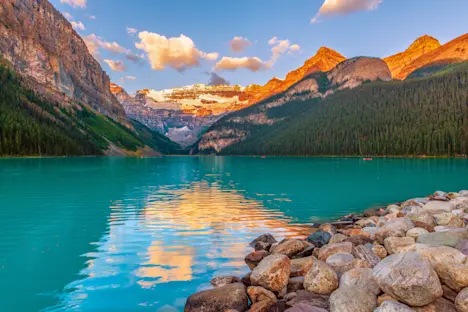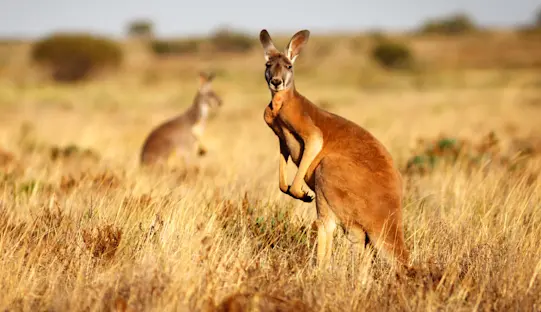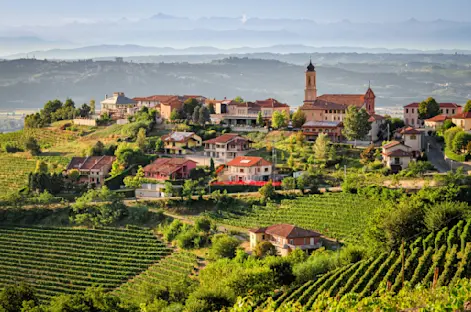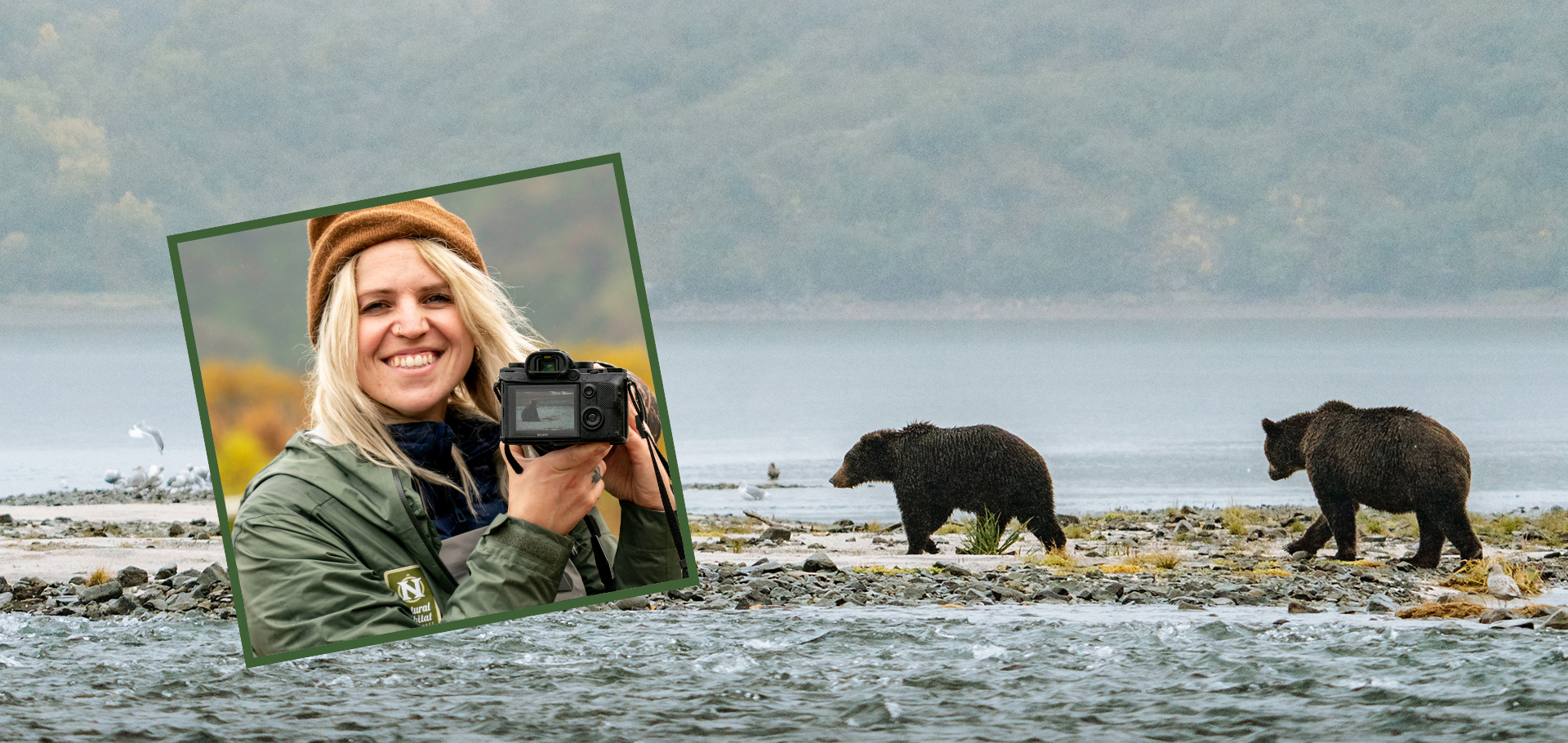Delve into Dana Cama’s bio, and it seems her life path was destined to lead to her role as social media manager for Natural Habitat Adventures.

Dana Cama and her dogs, Maggie and Bodhi, visit the Grand Canyon. © Dana Cama
After committing to conservation at an early age, Cama went on to study environmental science before graduating with an arts degree at Parsons School of Design. She then worked with several nonprofits, including Long Beach Animal Hospital and Evolution Haiti, traveling to far-flung destinations and selling her photography to support conservation and philanthropic efforts along the way.
In between trips, Cama also traveled independently throughout the U.S. and Canada in her trusty Subaru wagon, tracking and photographing wildlife and turning her prints into profits to support their cause.
Nat Hab: A Natural Fit
“Nat Hab’s values and mission of conservation through exploration aligned perfectly with mine,” says Cama, speaking of her desire to work for the company. “Everyone here is passionate about conservation, something that’s paralleled what I’ve been working towards in my own life for a long time,” she adds. “So, it’s kind of a coincidence that I found Nat Hab, but I’m really grateful that I did.”
Whether finding Nat Hab was a coincidence or fate, we’re grateful she did, too! Cama brings a flair for photography, a passion for conservation and a thorough understanding of social media to her new role.

© Dana Cama
Social Media Success
And she’s already garnered great success: In her first two months alone, “she managed to snag us our first viral video [a jaguar attacking a caiman on one of our Jaguars & Wildlife of Brazil’s Pantanal trips], taking our TikTok channel literally from zero to more than 50,000 followers in a matter of days,” says Nat Hab content marketing manager Valerie Gleaton.
To debut our new series spotlighting Nat Hab staff, Good Nature Travel caught up with Cama soon after she returned from her first Nat Hab adventure, our Alaska Grizzly Encounter: Kodiak to Katmai—a suitable journey for a self-professed “animal nerd” and someone with a spirit bear tattooed on their arm.

© Dana Cama
Read on to get Cama’s take on topics ranging from the role social media can play in conservation to why communing with Alaskan grizzlies brought her so much peace.
Our Interview With Dana Cama, Nat Hab’s Social Media Manager
Q. What inspired you to work at Nat Hab?
Along with creating impactful wildlife experiences for people, I love that Nat Hab is a leader in conservation. What’s so cool for me is that the company always walks the walk, to the point where employees are routinely encouraged to speak up if we see any room for improvement. Even on my recent Grizzlies of Katmai trip, I was asked to report back if I saw something that I felt didn’t live up to our sustainability standards.

Dana Cama (center) and Nat Hab Expedition Leader Brad Josephs (second from right) in Alaska © Dana Cama
Q. How does your experience as a photographer align with your new role?
Tracking and photographing wildlife on my own trips really familiarized me with the content I’m working on. Also, in my role, you need to be visually savvy to connect with people in an emotional way and know which content will make an imprint. My education and experience trained me to make those decisions every day at work—to put content out there that makes travelers want to engage with Nat Hab, travel with us and contribute to conservation.
Q. What was the best part of those early photography trips?
Seeing the impact that my images had and realizing I was able to raise money for good causes through the prints I sold. I was instantly hooked and knew I wanted to do more of this.

© Dana Cama
Q. So, can photography help change the world?
Definitely. I realized a lot of the places I was visiting weren’t spots that many people would ever see, but it’s possible to raise awareness about conservation and philanthropic needs in those places through imagery. You can describe a place or an animal, but it doesn’t necessarily bring the same emotional response that an image does.
Q. What about video’s role in conservation?
People are looking at such a high influx of still images all day long that photos today need to be extra impactful to really make someone stop and think. I think video is becoming increasingly popular and powerful because we can add more storytelling elements.
Q. What’s the secret to impactful social content?
Sharing real people’s experiences and making other people feel they can be a part of those experiences, too. It’s less about posting super polished promotional videos and more about connecting with people in a genuine way. What Nat Hab travelers experience in the field is all about real people having real moments. Our jaguar video that recently went viral was shot on a cell phone, and I think people connected with it because they felt like they could be there in that moment. So, I’m trying to share that kind of user-generated content as much as possible.
Q. Can you share some of your other goals as social media manager?
I’m planning on collaborating more with our Expedition Leaders in the field. Brad Josephs, my Grizzlies of Katmai guide, had an endless number of stories to tell, and our guests love him. So many of our guides are like that, and a lot of them are also incredibly talented photographers, so I’m hoping to showcase more of their work and tell their stories.
I also plan to use our social channels to highlight all the sustainability initiatives we’re working on with our conservation partner, World Wildlife Fund. We shared a recent video on how we’re helping save monarch butterflies, for example, that was especially powerful.
Q. How else can social media advance eco-awareness?
Social media can be a perfect learning tool because it’s super digestible and reaches such a wide audience. I think it’s also important to encourage people to visit wild places—experiencing these places ultimately inspires people to care for them. Understandably, there are many who may never experience destinations like Greenland and Antarctica, but our social media can be a voice for those places, and I think it’s important that Nat Hab continues to share their stories through our content.

© Dana Cama
Q. Speaking of wild places, what was your Alaska Grizzly Trip like?
It was very emotional for me. I’m someone who loves bears, but I’ve spent a long time having to keep a distance from them in the lower 48, which means I’ve never really been able to photograph them well. So, being able to experience grizzlies at a close range was incredible. I’ve never felt so peaceful and comfortable in my life.
Q. Comfortable—near grizzlies?!
Absolutely. They’re just curious, and our Expedition Leaders have such a great understanding of their behavior and how to communicate that we mean them no harm, so it’s totally safe. You’re in a place where bears and humans have this understanding. They’re just walking up and down riverbanks feeding on salmon, and they’ll walk right past you, knowing you aren’t a threat.
Q. What else did you love about the trip?
Returning to our small ship, the Natural Habitat Ursus, after photographing bears all day, we’d see whales, sea otters and other wildlife. That part of Alaska is just the most beautiful place. I’ve never felt more at peace or cut off from the world. Brad, my Expedition Leader, had so much knowledge about the area and love for these bears. It was clear he’d do anything to protect them.
Q. What are your top tips for photographing grizzlies?
Shoot at a high shutter speed and use a flexible focus point that you can keep your finger on to adjust and move with the bears, especially when they’re fishing.
Learn more about photographing grizzlies from The Natural Photographer.

© Dana Cama
Q. What’s next for you in terms of travel?
I recently converted a camper van so I can continue to travel independently and photograph and support wildlife as I go. For Nat Hab trips, gorilla treks in Uganda and Rwanda are especially high up for me. The ability to be that intimate with wildlife is what I love most. It’s so rare to be able to connect that deeply with animals, and these are the kinds of experiences I feel I can only do with Nat Hab.

© Dana Cama
You can follow Cama’s social media work for Nat Hab on our Facebook, Instagram, TikTok, Twitter and LinkedIn pages!































